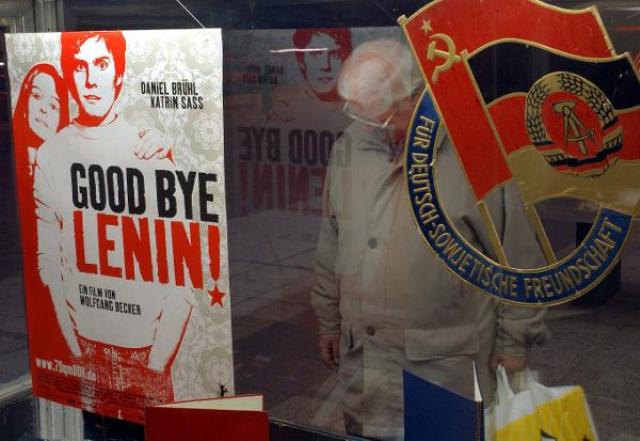













EINLEITUNG | DOKUMENTE | BILDER | LANDKARTEN | HERAUSGEBER
|
Während zu Beginn der 1990er Jahre der westdeutsche Blick auf den „fremden“ Osten auch im Film dominierte, spielten ab dem Ende des Jahrzehnts zunehmend ost- und gesamtdeutsche Perspektiven eine Rolle. Sowohl die Satire „Helden wie wir” (1999) – nach dem Roman des ostdeutschen Autors Thomas Brussig – sowie die wesentlich erfolgreichere Komödie „Sonnenallee” (1999), für die Brussig das Drehbuch verfasste, stellten die Erinnerung an die DDR und den westlichen Blick auf den Osten in Frage. Mit dem Film „Good Bye, Lenin!” (2003) gelang ein spektakulärer Erfolg. Mehr als 6,4 Mio. Zuschauer sahen 2003 den Film in Deutschland, und er konnte in 65 Länder verkauft werden. Die Tragikomödie „Good Bye, Lenin!” erzählt die Geschichte der ostdeutschen Familie Kerner. Nach der Flucht des Vaters in den Westen muss die Mutter ihre beiden Kinder alleine großziehen und engagiert sich als loyale DDR-Bürgerin. Während der Proteste am 7. Oktober 1989 erleidet die Mutter einen Herzinfarkt und fällt ins Koma. Als sie später wieder aufwacht, enthält ihr Sohn ihr – um ihre Gesundheit nicht zu gefährden – jede Informationen über den politischen Wandel vor und konstruiert in der Wohnung der Familie die Fiktion einer weiter bestehenden DDR. Im Bild: Ein Passant schaut am 26. Februar 2003 in einen Schaukasten des „Kinos International” an der Karl-Marx-Allee in Berlin vorbei, in dem gerade der Film „Good Bye, Lenin!” läuft. Rechts neben dem Filmplakat ist das Emblem der Gesellschaft für deutsch-sowjetische Freundschaft zu sehen. Foto: Tim Brakemeier.
picture-alliance / dpa
|
 Druckfassung
Druckfassung zurück zur Bilder-Liste
zurück zur Bilder-Liste vorheriges Bild
vorheriges Bild
